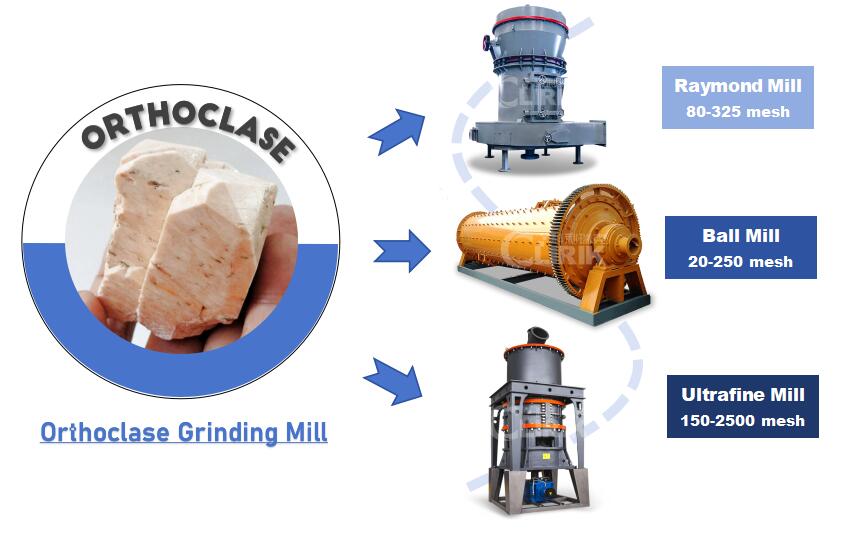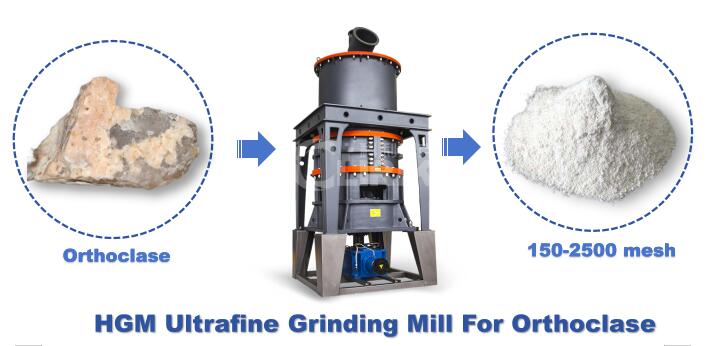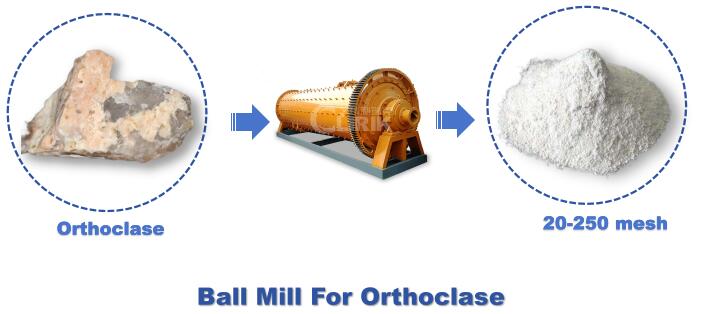For product information and pricing, Chat with sales agent:
or email us : sales@clirik.com
Click links below to see related products.

Orthoclase grinding mills are specialized machines used to crush, pulverize, and finely grind orthoclase mineral into powders of varying fineness for diverse industrial applications.

Choosing the right orthoclase grinding mill involves considering several factors to ensure optimal performance and efficiency for your specific requirements. Here are some key considerations:
If your application demands orthoclase powder with extremely fine particle sizes, typically below 5 microns, you should consider utilizing a high-pressure micro powder grinding mill such as the HGM series.

These mills are designed to achieve ultrafine grinding and can produce orthoclase powder with exceptional fineness.
Ultrafine orthoclase powder is often required in industries such as pharmaceuticals, cosmetics, and advanced materials, where precise particle size control is critical for product performance.
For applications where particle sizes ranging from 325 mesh to a few microns are acceptable, a Raymond mill or a ball mill could be suitable choices.
Raymond mills are well-suited for grinding materials to intermediate fineness levels and are widely used in industries such as construction materials, ceramics, and mining.

Ball mills, on the other hand, are versatile and can handle a wide range of particle sizes, making them suitable for various applications in industries such as chemical processing, metallurgy, and ceramics.

Expanding on the production capacity aspect:
If your production requirements involve large-scale processing and demand high throughput, selecting a grinding mill with a higher capacity is essential.
Mills like the HGM series micro powder grinding mill, known for their high-pressure grinding capabilities and efficient particle size reduction, are ideal for large-scale production.
Additionally, large-capacity ball mills equipped with advanced features for continuous operation and high-speed milling can also meet the demands of high-volume production processes.
These mills are commonly used in industries such as mining, cement production, and mineral processing, where large quantities of material need to be processed efficiently.
For smaller production volumes or batch processing applications, a Raymond mill or a smaller ball mill may suffice.
Raymond mills are capable of handling moderate throughput levels and are suitable for applications where precision grinding and consistent product quality are priorities.
Smaller ball mills, while offering lower throughput compared to their larger counterparts, are still capable of processing moderate quantities of material and are often used in laboratory settings, pilot plants, and small-scale production facilities.
These mills provide flexibility and versatility for applications requiring smaller production volumes or specialized processing requirements.
Energy Consumption: Consider the energy efficiency of the grinding mill, especially if you have concerns about operational costs. HGM series high-pressure micro powder grinding mills tend to be more energy-efficient compared to traditional mills.
l Material Compatibility: Ensure that the grinding mill is suitable for processing orthoclase and other materials you may need to grind.
l Grinding Flexibility: Choose a mill that offers flexibility in adjusting particle size distribution and can handle various hardness levels of orthoclase.
l Ease of Maintenance: Consider the ease of maintenance and availability of spare parts for the chosen mill.
l Operational Complexity: Choose a grinding mill that aligns with your operational capabilities and requirements. Some mills may require more complex operation and maintenance procedures.
Cost Consideration: Evaluate the initial investment cost as well as long-term operational costs when selecting a grinding mill.
l End-Product Quality: Consider the desired quality and characteristics of the orthoclase powder for your specific application.
l Regulatory Compliance: Ensure that the chosen mill meets any regulatory requirements or industry standards applicable to your application.
The choice of orthoclase grinding mill depends on your specific needs regarding particle size, production capacity, energy efficiency, versatility, maintenance requirements, budget, and application-specific considerations. Evaluate these factors carefully to select the most suitable grinding mill for your orthoclase processing needs. Consulting with a knowledgeable supplier or engineer can also help in making an informed.
